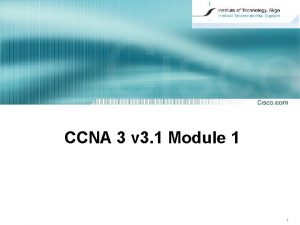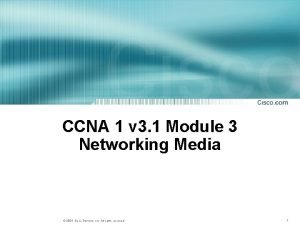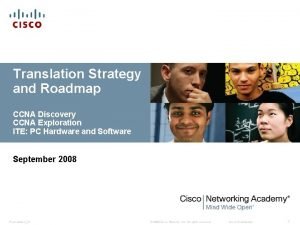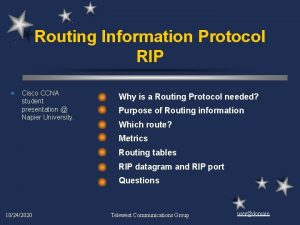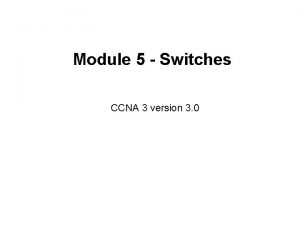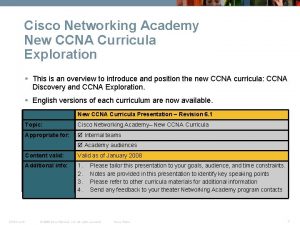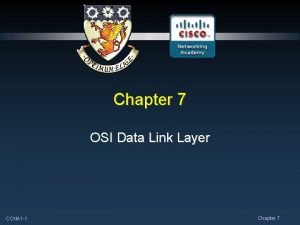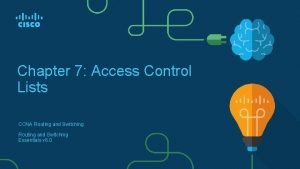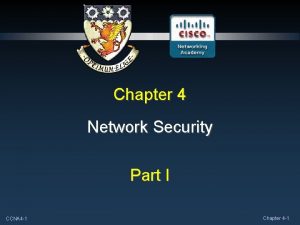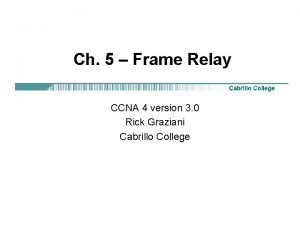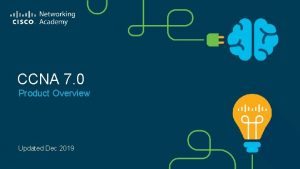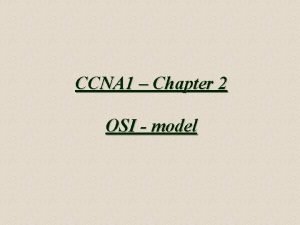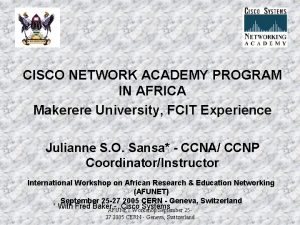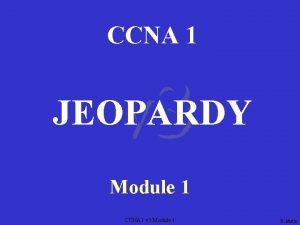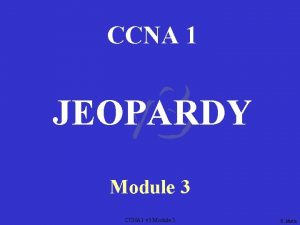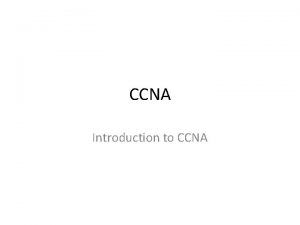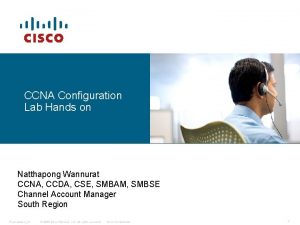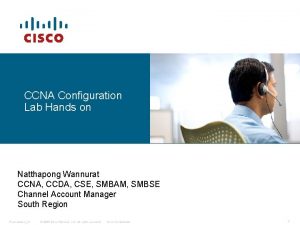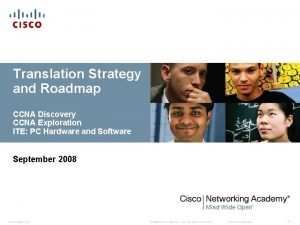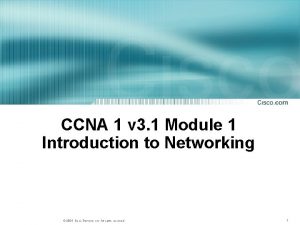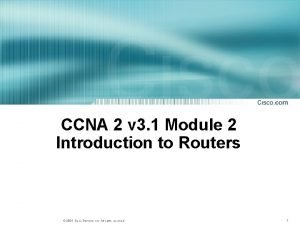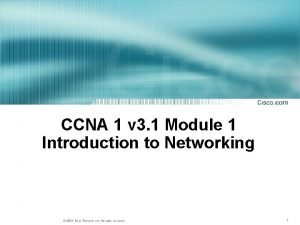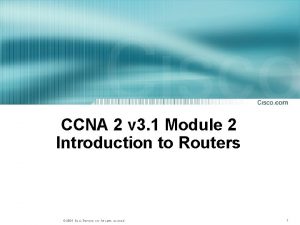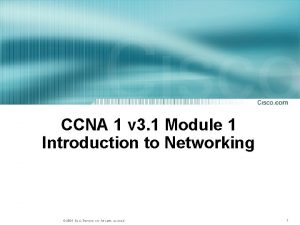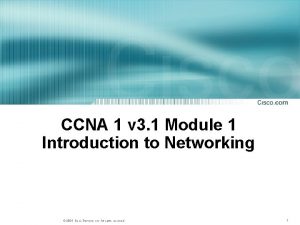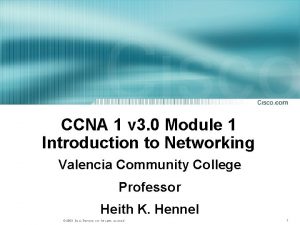CCNA 3 v 3 1 Module 1 Introduction


















- Slides: 18

CCNA 3 v 3. 1 Module 1 Introduction to Classless Routing © 2004, Cisco Systems, Inc. All rights reserved. 1

Purpose of This Power. Point • This Power. Point primarily consists of the Target Indicators (TIs) of this module in CCNA version 3. 1. • It was created to give instructors a Power. Point to take and modify as their own. • This Power. Point is: NOT a study guide for the module final assessment. NOT a study guide for the CCNA certification exam. • Please report any mistakes you find in this Power. Point by using the Academy Connection Help link. © 2004, Cisco Systems, Inc. All rights reserved. 2

To Locate Instructional Resource Materials on Academy Connection: • Go to the Community FTP Center to locate materials created by the instructor community • Go to the Tools section • Go to the Alpha Preview section • Go to the Community link under Resources • See the resources available on the Class home page for classes you are offering • Search http: //www. cisco. com • Contact your parent academy! © 2004, Cisco Systems, Inc. All rights reserved. 3

Objectives © 2004, Cisco Systems, Inc. All rights reserved. 4

What Is VLSM and Why Is It Used? © 2004, Cisco Systems, Inc. All rights reserved. 5

A Waste of Space © 2004, Cisco Systems, Inc. All rights reserved. 6

When to Use VLSM? © 2004, Cisco Systems, Inc. All rights reserved. 7

Sous-sous réseaux © 2004, Cisco Systems, Inc. All rights reserved. 8

Sous-sous réseaux, suite © 2004, Cisco Systems, Inc. All rights reserved. 9

Calculating Subnets with VLSM © 2004, Cisco Systems, Inc. All rights reserved. 10

A Working VLSM Example © 2004, Cisco Systems, Inc. All rights reserved. 11

Route Aggregation © 2004, Cisco Systems, Inc. All rights reserved. 12

Route Summarization © 2004, Cisco Systems, Inc. All rights reserved. 13

Configuring VLSM - exercice © 2004, Cisco Systems, Inc. All rights reserved. 14

RIP History • RIPv 1 has the following limitations: It does not send subnet mask information in its updates. It sends updates as broadcasts on 255. It does not support authentication. It is not able to support VLSM or classless interdomain routing (CIDR). © 2004, Cisco Systems, Inc. All rights reserved. 15

RIPv 2 Features © 2004, Cisco Systems, Inc. All rights reserved. 16

Comparing RIPv 1 and RIPv 2 © 2004, Cisco Systems, Inc. All rights reserved. 17

Summary © 2004, Cisco Systems, Inc. All rights reserved. 24
 Ccna module 1
Ccna module 1 Ccna module 3
Ccna module 3 Ccna module 3
Ccna module 3 C device module module 1
C device module module 1 Drug and alcohol jeopardy
Drug and alcohol jeopardy Ccna
Ccna Ccna 640
Ccna 640 Rip student
Rip student Ccna 3 chapter 1
Ccna 3 chapter 1 Cisco ccna exploration
Cisco ccna exploration What is a function of the data link layer ccna
What is a function of the data link layer ccna Ccna 4 chapter 7
Ccna 4 chapter 7 Ccna 4 chapter 4
Ccna 4 chapter 4 Modern network security threats
Modern network security threats Ccna frame relay
Ccna frame relay Ccna exploration network fundamentals
Ccna exploration network fundamentals Ccna bridging (version 7.0)
Ccna bridging (version 7.0) Osi model ccna
Osi model ccna Ccna makerere university
Ccna makerere university
